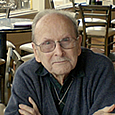
In Memoriam: Randall C. Ragan
Randall (Randy) Ragan died May 5th, 2009 at the age of 94. Randy was trained in ceramics at Ohio State University from 1934-1939; He served in the US Navy in WWII and retired as a Lt Commander.
He joined Gladding, McBean & Co. after the war, then the largest diversified ceramic company west of the Rockies. He worked in research and while there he invented and patented a process for making conductive floor tile for hospital operating rooms to drain off static electricity and eliminate explosions. He also invented and patented the process of roll compaction for making thin, inexpensive wall tile. This process was later adapted by others to roll compacting insulating ceramics for high temperature printed circuit boards called “CERACIRCUITS”.
He left Gladding, McBean to found MICROELECTRON, the first use of this word, which later became the generic description of an industry. He developed resistive and conductive thick film printable pastes and is the “Father” of the thick film industry. These were a key to the RCA MicroModule program of the 1950’s. He sold his company to ELECTRA, moved to San Diego in “CERAMIC VALLEY USA” (aka Sorrento Valley), and continued to innovate.
He invented the thick film fuse in wide use in electronic hardware and the thick film potentiometer. His retirement from ELECTRA/MEPCO was brief. He formed RAGAN TECHNOLOGIES, INC. and worked with the roll compaction process to create new uses for the technology. Among these were High Shear Compaction and Zero Shrink Ceramics. He continued his creative work at a new company, Ragan Labs, LLC.
Mr. Ragan was an Emeritus member of the American Ceramic Society, and a Charter member of ISHM later IMAPS. In 1998 he received the John A. Wagnon Jr. Technical Achievement Award from the International Society for Hybrid Microelectronics, citing him as a “pioneer in the microelectronics and electronics packaging industry,” and for “starting the era of electronic-ceramic devices that paved the way for modern microelectronics technology.” In 1991, he was given the Samuel Geijsbeek Award by the American Ceramic Society in recognition of his contributions to the art of ceramics.
